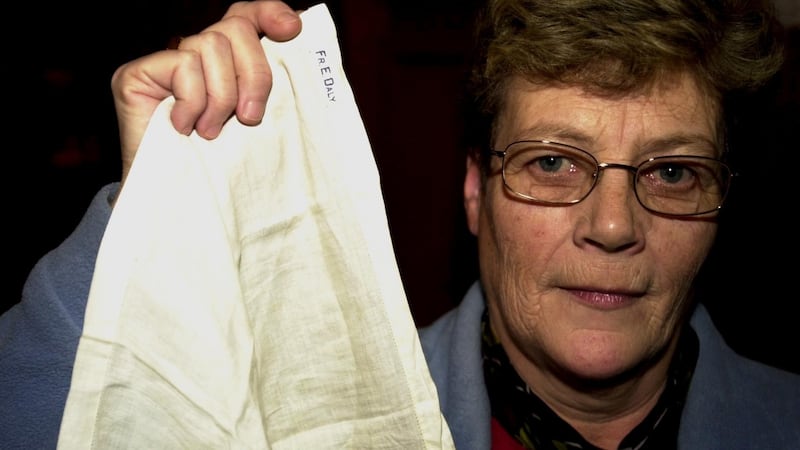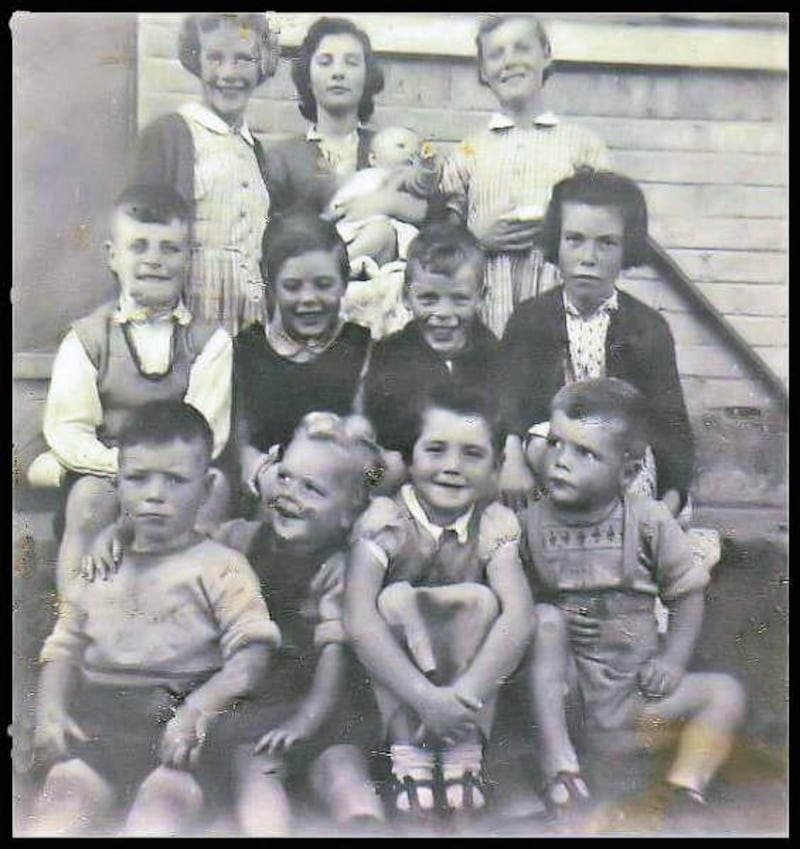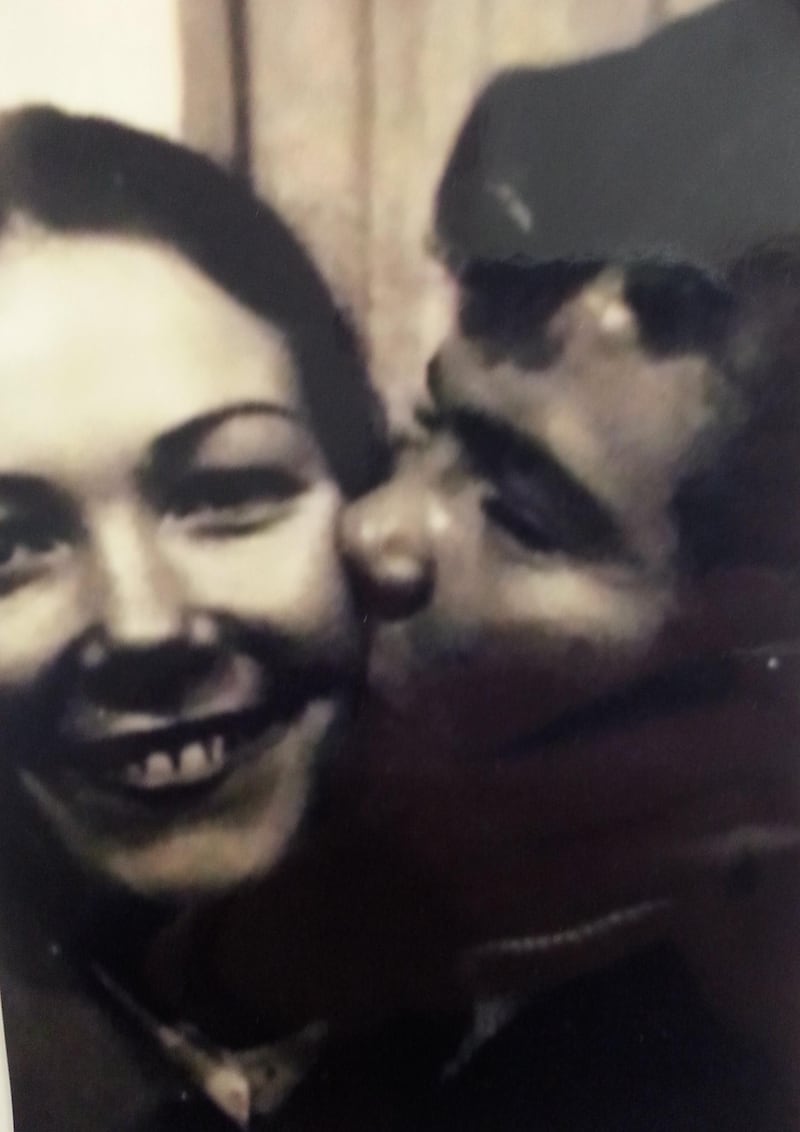It is the symbol of Bloody Sunday: the white handkerchief stained red with the blood of the dying Jackie Duddy, held in the priest’s outstretched arm as he tries to bring him to safety.
The 17-year-old was the first of 13 people to die when the British army’s Parachute Regiment opened fire on anti-internment marchers in Derry’s Bogside on January 30th, 1972; a 14th died later.
"The pictures almost follow you, and I think it must be very tough for his brothers and sisters, my mammy and her family, to be confronted with that all the time," says his niece Julieann Campbell. "Every time Bloody Sunday is mentioned on the news, that's always their go-to footage, and my mum sees her dying brother's last moments all over again.
“As children we found it very difficult when it was on TV, but now we know to say, ‘Mum, turn your head’.”
'These stories had to be told, while these people are still among us and their memories can be recorded and passed on to another generation'
Born after Bloody Sunday, Campbell never knew her uncle Jackie; as children she and her brothers were told simply that “he was a boxer and he went on a peace march and was shot by soldiers”.
Such was her inheritance; in the years since, her uncle has become her inspiration for a life devoted to telling the story of Bloody Sunday. “I’m doing it on his behalf.”
A campaigner and former chair of the Bloody Sunday Trust, Campbell is also an award-winning writer and poet and is currently studying for a PhD at Ulster University on the impact of post-conflict storytelling.
Her latest book, published to coincide with the 50th anniversary, is an oral history of Bloody Sunday told in the words of those who witnessed it.
“We were there. We saw what happened, but nobody wanted to know – or even asked,” says Leo Young, the brother of 17-year-old victim John Young.

He is one of about 100 people – many of whom have never been interviewed before – whose eyewitness testimony has been used to piece together the story not just of the day, but its impact on the city of Derry and the families’ long campaign for truth and justice which culminated in the Saville inquiry and report and, subsequently, in a police investigation and an aborted prosecution of one soldier, Soldier F.
“People in Derry knew, but outside Derry people didn’t know because the narrative was controlled by the media, controlled by the government, controlled by the army,” says Campbell. “These stories had to be told, while these people are still among us and their memories can be recorded and passed on to another generation, because otherwise these stories, this history, would be lost.”
There were 15 children in the Duddy family, nine girls and six boys. Jackie and his younger brother Gerry, 14, were close. “We played football in the back field and got up to all skulduggery,” remembers Gerry. “Me and Jackie had a paper round together, and he would have taken us down to the Long Tower Boxing Club to watch him train when he had a fight coming up.”
On the morning of the march, Jackie’s older sister Kay, who was 25, remembers him getting all dressed up for the march. “He was looking dapper. He was going down to see the talent. He said, ‘Do you think my girlfriend will think I look all right?’ That was how he left the house that day.”
Their father had forbidden the boys from going on the march, but Jackie helped Gerry sneak out anyway. Their older brother warned them to go home. “I saw Jackie at the corner of Rossville Street and I said, ‘Watch yourself, our Billy’s looking for you, he’s going to send you home.’ ‘I’m a big boy,’ he said.
When the shooting began, everyone ran; Fr Daly – later Bishop Daly – passed the teenager and saw him, laughing and excited. The he heard the shot. Jackie gasped, and fell.
“He was in big, big trouble, and we worked frantically with him,” the bishop told Campbell in his final interview before his death in 2016. He gave him the last rites, and prayed with him. “The paras were still firing and we decided to make a dash for it to try and get young Jackie away.

“We were terrified. This seemed like it was in our imagination, like this was a film we were seeing. It was hard to believe it was reality. I was terrified.”
Gerry too was running; he passed what he later realised had been his brother’s body – “I didn’t know then that it was Jackie” – and “where Barney McGuigan was lying . . . I saw the body and the blood on the ground . . . I kept on running.”
Kay got the news. “I was told over the phone that Jackie was dead on admission to hospital. I vaguely remember screaming and throwing the phone in the air and then having to go home and tell my daddy.”
“My mammy had died in 1968 and I remember my daddy’s reaction. He said: ‘Now I know why the sacred heart took your mother – she wasn’t meant to be here to go through this.’”
Kay and her sister Susie – Campbell’s mother – accompanied their father to the hospital and identified their brother. “I don’t remember the funerals . . . I feel I lost three days from telling my daddy the news, and I don’t remember his remains in the house, so I know it’s probably buried deep somewhere in my brain and I’ve locked it away and it’s probably my only coping mechanism,” says Kay.
The knowledge that Bishop Daly had been present “was always a great comfort to us, knowing he was there with Jackie when he was breathing his last, and he was able to give him the last rites.”

When Jackie’s clothes were returned to the family, the handkerchief was with them. “When my daddy died in 1985 I became the custodian of the hanky,” says Kay.
For decades she carried it everywhere with her, tucked away safely in her handbag. It was there throughout the families’ campaign for justice, begun in the early 1990s, which would eventually lead to the Saville inquiry, and came with her for every day of the hearings. “I always called it my comfort blanket. It was reassuring to have it with me, as if some of Jackie was still there.”
It was also with her on the steps of the Guildhall after the Saville report was published in June 2010, when she and other relatives, friends and supporters emerged to be greeted by the cheering crowd. Their loved ones' deaths, the then British prime minister David Cameron said, were "unjustified and unjustifiable".
Alongside them was Bishop Edward Daly, invited as a friend of the Duddy family. He had no idea the handkerchief still existed until he gave evidence at the inquiry. "He shed a tear, he was so delighted we still had it. I said, 'I suppose we'll have to give it back to you now,' and he said, 'No, Kay, that's yours.'
Seeing the handkerchief, he later told Campbell, “totally broke me up that day. Giving evidence was bad enough, but that just cracked me up. It was so emotional. I’m aware it has since become a very powerful symbol, but I never thought of that at the time.”
'I'm quite satisfied that what happened that day was murder, carried out by men in uniform, of people who were unarmed. It's something that is burned into my mind ever since'
The events of Bloody Sunday had bound them together; afterwards Bishop Daly kept a framed photograph of Jackie on his desk, and with it the stole he had been wearing on Bloody Sunday.
From that day onwards, he saw it as his duty to speak up for the community he represented and to tell the world what he had seen – an unarmed civilian, a child who was shot while he was running away.
“I am quite satisfied in my own mind that there was no fire on the soldiers from behind me,” he told Campbell. “I can speak quite categorically about this because I was there from the beginning until the end of it.
“I’m quite satisfied that what happened that day was murder, carried out by men in uniform, of people who were unarmed. It’s something that is burned into my mind ever since.”
“It was so important to him that the truth was told about Bloody Sunday,” says Kay. “He did so much not just for our family but for all the Bloody Sunday families, and the wounded and for everybody in this wee town of ours.”
Fifty years on from Bloody Sunday, the question of how to deal with the past remains resolutely unresolved in the North
“There are plenty of books about Bloody Sunday but I wanted to tell the story from the eyes of the people themselves, because nobody had really done it that way before,” says Campbell.
“Because I had lived and worked so close to these stories over the years I knew all the small things, the anecdotes, the forgotten things that tie a story together and give it heart and soul but that would be forgotten over time.
“Like when Hugh McMonagle went to try and get help from the soldiers and he was shouting at them, ‘Please help us, this wee boy’s dying.’ And instead of helping, the soldiers started clapping, and Hugh said he would never forget the sound.
“It’s those incidental things that really paint a picture of what people went through that day, being attacked and feeling as if they were totally alone in the whole world.”
McMonagle was among those who tried to help Jackie; he was, says Campbell, “a friend of mine and a friend of my family”, and one of the first people she told when she was asked to write the book.

“He died shortly afterwards, and I’m really privileged to have voices like his in it. It’s the least I could have done for Hugh after everything he’s done for us over the years, to have his story told in a way that really conveys how much this affected his whole life.”
In his interview, McMonagle recalled returning home and being met at the door by his wife to tell him there were 13 dead. “I couldn’t even answer. I just looked at her. She asked if I was all right, and I sat down, and told her that they murdered them. I remember her coming over to me, and she says I wept like a wain.”
“Hugh tried to save the life of a young boy, and they didn’t save it,” says Campbell. “It affected him so much that it was only in recent years he started talking about it, but he found a real solace in it.”
Campbell knows first-hand how the impact of such trauma cascades through the generations. “It’s important there are opportunities for the community to speak and have their voices heard and recorded and their experiences validated.
“That allows people to create something out of trauma, and I do think there is great healing in it. I don’t think it can be done in isolation; when people are looking for truth and justice and reconciliation you can’t just tell a story and expect everything to be healed, but in tandem with other mechanisms it’s a powerful tool.”
Fifty years on from Bloody Sunday, the question of how to deal with the past remains resolutely unresolved in the North. There is, however, unanimous opposition to the new proposals put forward by the UK government which would rule out prosecutions, civil cases and legacy inquests.

“I don’t think you could print it,” says Gerry Duddy when The Irish Times asks him for his view of the British proposals. “What I will say is that I think it’s going to hurt a lot of people, on all sides, whatever their religion.”
“We got more than most dream of with the Saville report, but because we’ve never had justice this is a story that still has no end . . . and this is not just about Bloody Sunday – there are so many other cases this is representative of,” says Campbell.
"The British government has done the people of Northern Ireland a great disservice in that the normal rule of law does not apply here. This would never have happened in London or Birmingham or Manchester."
“People are still angry that their neighbours, friends, family were gunned down in broad daylight with the world’s media there and still nobody has been taken to court for it,” says Gerry. “We’re not just going to walk away, we’ve come too far to throw in the towel now.
“I always say to Kay, we made a promise and I hope we kept it. I hope Jackie’s happy in heaven, but it’s just a pity we didn’t get the final step. Yet.”
'I keep thinking that the soldier who shot our Jackie is probably the same age as our Jackie, and I keep hoping that one day when he sees his wee smiling photo he'll say enough, it's time for me to tell the truth here'
Their father, Campbell’s grandfather, always believed “as they got older their consciences would get the better of them”. Says Kay: “I personally feel that we have achieved what we were hoping to achieve, and what was important was that Widgery was binned and they were declared innocent.
“I am 75 years old now, I need my life back for a while,” she says. “Poor Jackie and the others have been buried for the last 50 years, and it’s now time we have to think about laying them to rest.
“I keep thinking that the soldier who shot our Jackie is probably the same age as our Jackie, and I keep hoping that one day when he sees his wee smiling photo he’ll say enough, it’s time for me to tell the truth here.
“I really want him to put his hand up and say, ‘I done it, and I’m sorry I done it.’ I could settle for that. I’m putting that appeal out there for him, that maybe, just maybe, that’ll be my miracle.”
Campbell describes her aunt as her “reluctant role model . . . because she didn’t want to do any of this, it’s just that someone had to, so her and my uncle Gerry thought they would, on behalf of the family.
“That’s how I got involved, it was because Kay lived next door and I was genuinely interested in what she was doing.
“It’s only now you realise how much of their lives they gave up in pursuit of truth and justice.
“On the 50th anniversary, I’ll be looking at my relatives and wondering how they did it, and I’ll be thanking Jackie, quietly, because I never knew him but clearly he has inspired me.
“I want to give him a quiet thanks for trusting me with his story, if he can hear me.”
Fifty years on, the white handkerchief remains the enduring symbol of Bloody Sunday; it is now on display in the Museum of Free Derry in the Bogside, but remains in the ownership of the Duddy family.
“If anything should happen to the museum or anything happen to me, it goes to our Julieann,” says Kay. “She is the next generation, and it is safe with her.”
On Bloody Sunday: A New History of the Day and its Aftermath – By the People Who Were There by Julieann Campbell is published by Monoray Books


















